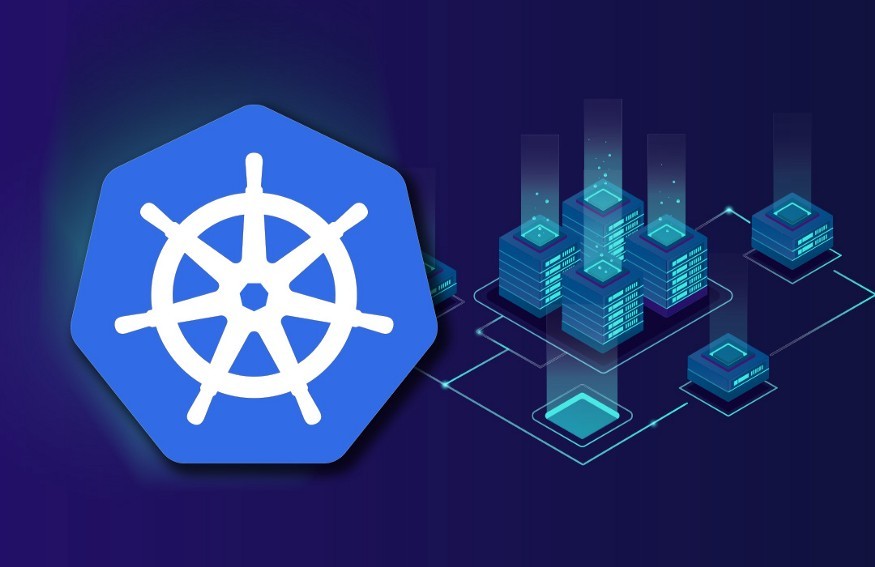“Effortlessly orchestrate containerized workloads in the cloud with the power of Kubernetes.”
Kubernetes plays a crucial role in orchestrating containerized workloads in the cloud. As a container orchestration platform, Kubernetes automates the deployment, scaling, and management of containerized applications. It provides a robust and scalable infrastructure for running containers, allowing organizations to efficiently manage their workloads in a cloud environment. With its advanced features and capabilities, Kubernetes simplifies the process of deploying and managing containerized applications, enabling organizations to leverage the benefits of cloud computing effectively.
Benefits of Using Kubernetes for Container Orchestration in the Cloud
Benefits of Using Kubernetes for Container Orchestration in the Cloud
Containerization has revolutionized the way applications are deployed and managed in the cloud. With containers, developers can package their applications along with all the necessary dependencies, making them highly portable and efficient. However, as the number of containers grows, managing and orchestrating them becomes a complex task. This is where Kubernetes comes in, offering a powerful solution for container orchestration in the cloud.
One of the key benefits of using Kubernetes for container orchestration in the cloud is its ability to automate the deployment and scaling of containers. Kubernetes provides a declarative approach to defining the desired state of the system, allowing developers to specify the number of replicas they want for each container. Kubernetes then takes care of automatically creating and scaling the containers to meet the desired state. This automation not only saves time and effort but also ensures that the system is always running at the desired capacity.
Another advantage of using Kubernetes for container orchestration in the cloud is its ability to handle container failures gracefully. Containers can fail for various reasons, such as hardware failures or software bugs. Kubernetes monitors the health of containers and automatically restarts them if they fail. It also provides mechanisms for rolling updates, allowing developers to update their applications without causing any downtime. This fault-tolerance and self-healing capability of Kubernetes ensures that applications are highly available and resilient in the face of failures.
Scalability is a crucial requirement for cloud-based applications, and Kubernetes excels in this area. With Kubernetes, developers can easily scale their applications horizontally by adding or removing containers. Kubernetes automatically distributes the workload across the available containers, ensuring that the system can handle increased traffic or demand. This scalability feature of Kubernetes allows applications to be highly responsive and elastic, adapting to changing workloads in real-time.
In addition to scalability, Kubernetes also provides advanced networking capabilities for containerized workloads in the cloud. Kubernetes allows containers to communicate with each other using a virtual network, regardless of their physical location. This enables developers to build complex microservices architectures, where different components of an application can be deployed and scaled independently. Kubernetes also supports load balancing and service discovery, making it easy to expose services to the outside world and distribute traffic evenly across containers.
Security is a top concern when it comes to deploying applications in the cloud, and Kubernetes offers several features to address this concern. Kubernetes provides fine-grained access control, allowing administrators to define who can access and modify resources within the cluster. It also supports network policies, which can be used to restrict communication between containers and enforce security rules. Additionally, Kubernetes integrates with popular container image registries, ensuring that only trusted and verified images are used in the cluster.
In conclusion, Kubernetes plays a crucial role in orchestrating containerized workloads in the cloud. Its automation, fault-tolerance, scalability, networking, and security features make it an ideal choice for managing and scaling containerized applications. By leveraging Kubernetes, developers can focus on building and deploying their applications, while leaving the complexities of container orchestration to the platform. With its growing popularity and vibrant ecosystem, Kubernetes is undoubtedly the go-to solution for container orchestration in the cloud.
How Kubernetes Simplifies the Management of Containerized Workloads in the Cloud
The Role of Kubernetes in Orchestrating Containerized Workloads in the Cloud
Containerization has revolutionized the way applications are deployed and managed in the cloud. Containers provide a lightweight and portable solution for packaging software, making it easier to deploy and scale applications across different environments. However, as the number of containers grows, managing and orchestrating them becomes increasingly complex. This is where Kubernetes comes in.
Kubernetes is an open-source container orchestration platform that simplifies the management of containerized workloads in the cloud. It provides a robust and scalable framework for automating the deployment, scaling, and management of containers. With Kubernetes, organizations can efficiently manage their containerized applications, ensuring high availability and optimal resource utilization.
One of the key features of Kubernetes is its ability to automate the deployment of containers. Instead of manually deploying containers on individual hosts, Kubernetes allows users to define a desired state for their applications using declarative configuration files. Kubernetes then takes care of scheduling and deploying containers to the appropriate hosts, ensuring that the desired state is maintained.
In addition to deployment, Kubernetes also provides powerful scaling capabilities. With Kubernetes, users can easily scale their applications up or down based on demand. Kubernetes automatically monitors the resource utilization of containers and adjusts the number of replicas accordingly. This ensures that applications can handle increased traffic without any downtime or performance degradation.
Another important aspect of Kubernetes is its ability to manage container networking. Kubernetes provides a virtual network that allows containers to communicate with each other, regardless of the host they are running on. This enables seamless communication between containers, making it easier to build complex distributed applications.
Furthermore, Kubernetes offers robust service discovery and load balancing capabilities. With Kubernetes, users can define services that abstract away the underlying container instances. This allows applications to easily discover and communicate with other services, regardless of their location or IP address. Kubernetes also provides built-in load balancing, distributing incoming traffic across multiple instances of a service to ensure optimal performance and availability.
Kubernetes also includes powerful monitoring and logging capabilities. It provides a centralized dashboard that allows users to monitor the health and performance of their applications in real-time. Kubernetes also integrates with popular logging and monitoring tools, making it easier to collect and analyze application logs and metrics.
Moreover, Kubernetes supports rolling updates and rollbacks, making it easier to deploy new versions of applications without any downtime. With Kubernetes, users can define update strategies that ensure a smooth transition from one version to another. If any issues arise during the update process, Kubernetes can automatically roll back to the previous version, minimizing the impact on users.
In conclusion, Kubernetes plays a crucial role in orchestrating containerized workloads in the cloud. It simplifies the management of containers, providing powerful features for deployment, scaling, networking, service discovery, monitoring, and updates. With Kubernetes, organizations can efficiently manage their containerized applications, ensuring high availability, scalability, and optimal resource utilization. As containerization continues to gain popularity, Kubernetes will undoubtedly remain a vital tool for managing and orchestrating containerized workloads in the cloud.
Best Practices for Deploying and Scaling Containerized Workloads with Kubernetes in the Cloud
The Role of Kubernetes in Orchestrating Containerized Workloads in the Cloud
Containerization has revolutionized the way applications are deployed and managed in the cloud. With containers, developers can package their applications along with all their dependencies into a single, portable unit. This allows for easy deployment across different environments, making it an ideal solution for cloud-based workloads.
However, as the number of containers and their complexity increases, managing them manually becomes a daunting task. This is where Kubernetes comes into play. Kubernetes is an open-source container orchestration platform that automates the deployment, scaling, and management of containerized workloads in the cloud.
One of the key benefits of using Kubernetes is its ability to abstract away the underlying infrastructure. With Kubernetes, developers can focus on building and deploying their applications without worrying about the specific details of the cloud provider or the hardware on which their applications are running. This makes it easier to migrate applications between different cloud providers or even between on-premises and cloud environments.
When it comes to deploying containerized workloads with Kubernetes in the cloud, there are several best practices that can help ensure a smooth and efficient deployment process. First and foremost, it is important to design your application with scalability in mind. Kubernetes allows you to scale your application horizontally by adding more instances of your containers. By designing your application to be stateless and decoupled, you can easily scale it up or down based on demand.
Another best practice is to use Kubernetes’ built-in features for managing resources. Kubernetes allows you to define resource limits and requests for each container, ensuring that your application has enough resources to run efficiently without hogging all the available resources on the host machine. This helps prevent resource contention and ensures that your application performs optimally.
In addition to resource management, Kubernetes also provides powerful networking capabilities. It allows you to define services that expose your containers to the outside world, as well as internal services that allow communication between different containers within the cluster. By leveraging these networking features, you can build complex, microservices-based architectures that are highly scalable and resilient.
Monitoring and logging are also crucial aspects of deploying containerized workloads with Kubernetes in the cloud. Kubernetes provides a rich set of tools for monitoring the health and performance of your containers and the underlying infrastructure. By collecting and analyzing metrics, you can identify bottlenecks and optimize your application for better performance. Similarly, logging allows you to capture and analyze logs generated by your containers, helping you troubleshoot issues and gain insights into the behavior of your application.
Lastly, it is important to regularly update and patch your Kubernetes cluster and the underlying infrastructure. Kubernetes has a vibrant community that actively develops and maintains the platform, releasing regular updates and security patches. By staying up to date with these updates, you can ensure that your cluster is secure and benefits from the latest features and improvements.
In conclusion, Kubernetes plays a crucial role in orchestrating containerized workloads in the cloud. Its ability to abstract away the underlying infrastructure, along with its powerful features for scaling, resource management, networking, monitoring, and logging, make it an ideal choice for deploying and managing containerized workloads in the cloud. By following best practices such as designing for scalability, managing resources effectively, leveraging networking capabilities, monitoring and logging, and staying up to date with updates and patches, you can ensure a smooth and efficient deployment process for your containerized workloads in the cloud.In conclusion, Kubernetes plays a crucial role in orchestrating containerized workloads in the cloud. It provides a robust and scalable platform for managing and automating the deployment, scaling, and management of containers. Kubernetes offers features such as load balancing, service discovery, and self-healing capabilities, which ensure high availability and fault tolerance. It also enables efficient resource utilization and allows for easy scaling of applications. With its extensive ecosystem and community support, Kubernetes has become the de facto standard for container orchestration in the cloud.




